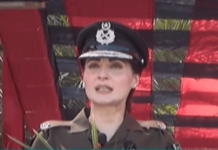The date 19 May 1999 turned out to be the most horrific and awful for the fisherfolk of the coastal areas of district Thatta and Sujawal, who were battered by a cyclone that devastated almost everything across the coastal region.
The calamity was so sudden that people could not take precautionary measures to save their lives and the lives of their loved ones. The residents of these areas, who saw the frightening scenes, revealed that the national media as well as the department concerned were utterly unaware of such a massive catastrophe that not only changed the demography of the region but also the fate of the coastal population.
Before this haunting calamity, the people of the Jati coastline were well-settled and happy, relying on fishing, agriculture and livestock as their source of income but the OA2 cyclone that hit the coastal area on the night of 18 and 19 May 1999 wiped out each and everything. Since that fateful day, 23 years have passed but the people of these areas have not come out of the trauma inflicted on them by that cyclone. Sharing their ghastly experience about the devastation of the cyclone, few locals said that when the wind started blowing late at night they had never thought that it would wreak havoc in their area.
“We were left at the mercy of no one except Almighty since no prior warning was issued by the government. Many of us were either in the high sea or in their straw and mud houses that were blown away by high-velocity winds,” said a local, Noor Muhammad Themore. He added that almost all male inhabitants of Village Abdul Rahman Dandal who were at sea fishing, perished. The overall loss of 439 human lives, 15,000 houses, more than 1,800,000 acres of agricultural land – which is still uncultivable – and countless livestock added to the tragedy of around 300 missing fishermen who were at sea that day.
Mahi Soomri of the same village lost all male members of her family including two sons, sons-in-law, and two brothers but she still believes that they will return one day. Visually-impaired Aroo Badai also thinks that his four sons who tripped and fell prey to cruel tides of the sea are still alive and languishing in Indian jails.
The same goes for the sisters of Ghulam Hussain, Abdullah, and Ibrahim in village Loung Abro who were in their vessel on that day in the middle of the sea. They have woven quilts, and are dreaming to unfold those quilts on the marriage of their brothers.
Senior Journalist Haji Zahid Sommro, who covered post-cyclone events and had also compiled a book on the subject, said that the federal and provincial governments were not ready to believe that such large-scale devastation had taken place in the aftermath of the cyclone but then local journalists played an active part in taking these painful stories to the national and the international media. There were four freshwater lakes in the region but following the advancement of the sea, saline water penetrated those rivers and now there are no freshwater lakes.
Sommro said that around two decades had passed since that throbbing calamity, but no government had ever turned up to work for the development of the coastal population. “It seems that their sufferings are yet to end,” he said.







